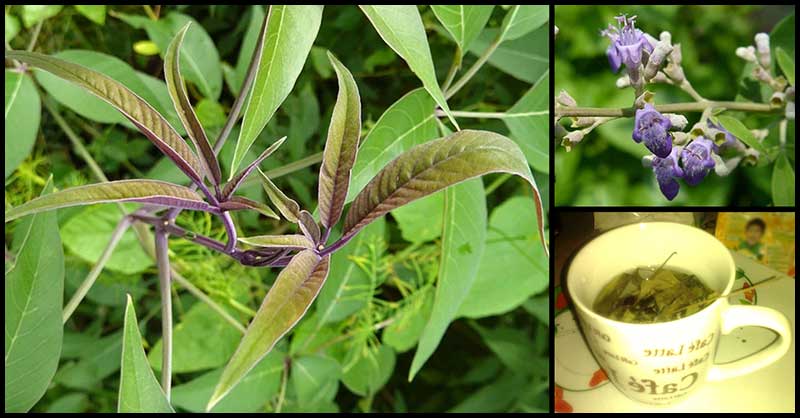Lagundi is a shrub growing wild in vacant lots and wastelands. It has blue and bell-shaped flowers and small fruits that turn black when ripe. Traditionally, its leaves have been used as a decoction to treat cough, fever, respiratory diseases, and as an anti-inflammatory agent.
It contains antioxidants, phenolic compounds, and flavonoids such as casticin, chrysoplenol D, luteolin, iso-orientin, and luteolin-7-0-glucoside. Other compounds such as epicatechin, quercetin, catechin, myricetin, tocopherol, β-carotene, and lycopene were also found to be present in lagundi leaf extracts. Chrysoplenol D was identified as the bioactive substance having anti-histaminergic and muscle relaxant properties particularly useful for cough and asthma. Primarily it is recognized as an herbal medicine for respiratory problems (1).
Lagundi As A Natural Remedy
Several clinical trials involving adult and children patients with mild to moderate cough of non-bacterial origin showed that there was a decreased frequency of cough by the third day using the herb as compared to placebo wherein frequency of cough decreased by the 6th day. In addition to this, there was also increased airflow/bronchodilation, improved ease of expectoration, and the disappearance of phlegm with patients treated with lagundi (2).
In a study carried out to investigate the cough-relieving potential of lagundi, results showed that the antitussive effect of the butanolic extract of V. negundo inhibited the cough provoked by SO(2) gas in mice and exhibited maximum protection after 60 min of administration. In toxicity tests, no signs of neural impairment and acute behavioral toxicity were observed at antitussive doses and extract has been well tolerated at higher doses. The results indicate that V. negundo exhibits an antitussive effect and was found devoid of toxicity (3).
In another study conducted, researchers found that crude extract of V. negundo leaves possesses a combination of papaverine-like PDE inhibitor and diltiazem-like Ca++ entry blocking constituents, which partly explain its bronchodilatory effect, thus validating its medicinal importance in asthma (4).
Preparation and Use
- Boil half a cup of chopped fresh or dried leaves in 2 cups of water for 10 to 15 minutes. Drink half a cup three times a day (5).
- For skin diseases or disorders, apply the decoction of leaves and roots directly on the skin (5).
- For muscle pains, headache, and fever. The paste is prepared by pounding Lagundi leaves and heating to warm then apply to the affected area until the condition improves (6).
- For washing wounds, vaginal douche, for gargling to treat mouth sores and sore throat, and as a bronchodilator in cases of coughs and asthma. Mix one cup of cut fresh leaves and flowers to 2 cups of water. Boil for 10 minutes. Let it steep and strain the solid parts. Tea: take 1/2 cup, three times a day until the condition improves (6).
The root is especially good for treating dyspepsia, worms, boils, colic, and rheumatism. Boiled seeds are eaten in order to prevent the spreading of toxins and venom from bites of poisonous animals. Juice extracted from the flowers of the Lagundi plant is taken in as an aid for disorders like fever, diarrhea, liver disorders, and even cholera. While a decoction of the plant leaves is suggested to be taken by individuals to help increase the flow and production of milk, as well as to induce menstruation (5).
Sources:
- https://www.herbanext.com/philippine-medicinal-herbs/lagundi
- http://ttbdo.upm.edu.ph/node/49
- https://pubmed.ncbi.nlm.nih.gov/21809956/
- https://www.tandfonline.com/doi/full/10.3109/13880209.2014.919327
- http://www.philippineherbalmedicine.org/lagundi.htm
- http://www.medicalhealthguide.com/articles/lagundi.htm









